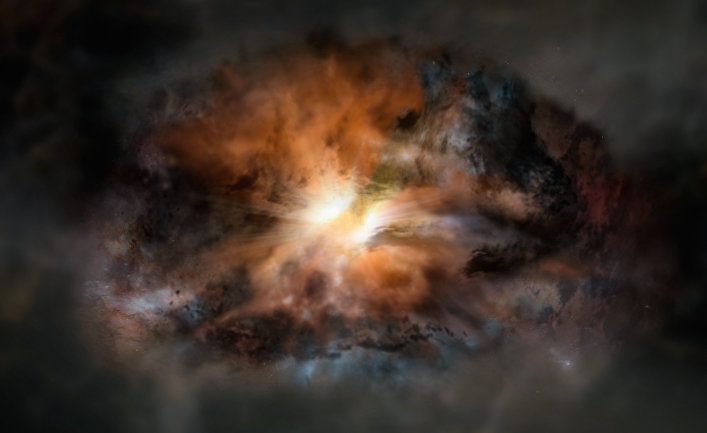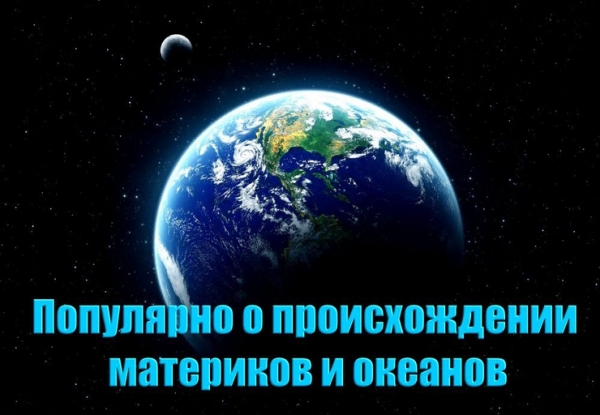Perhaps the universe is known to us by the astrophysics research potentially habitable worlds, there also could be intelligent life. Indeed, there is an astronomical number of possibilities for intelligent, technologically advanced life forms, but because of huge uncertainties, it may well be that that people it is the only plowing open space living things known in our universe.
In 1961, scientist Frank Drake (Frank Drake) was the first equation, showing how many today in the universe there is making space travel civilizations. The basis of calculation he put a series of unknown characteristics and factors to do on the basis of their assessments and ultimately to understand how many in our galaxy and the observable universe currently has a technologically advanced species of aliens.
For starters, dramatically expanded our understanding of the size and scale of the universe. Thanks to observations with space and ground-based observatories that cover the entire spectrum of electromagnetic waves we now know how big the universe is and how many galaxies there are. Therefore, looking into a huge chasm deep space, we are able to calculate how many there are in the universe and it stars throughout cosmic history since the big Bang. This is a huge number: 10 to the 24th degree. And this tells us how much the universe over the past 13.8 billion years, there are chances to create life like ours.

the <small>© NASA/JPL-Caltech/T. Pyle</small>this is how the artist imagined the exoplanet Kepler-452b
Earlier we wondered how many stars have planets revolving about them, what planet in the solid state, how many are similar to our atmosphere, and how many of such planets is at a distance from their stars that their surfaces were water in the liquid state. But thanks to the huge success in the study of exoplanets in the first place, with a space satellite NASA “Kepler”, we learned a lot about what is in space. Among other things, we now know the following:
around 80-100% of stars orbit at the turning of the planet or the planetary system;
— approximately 20-25% of these systems have a planet in the habitable zone or in a place where its surface can form liquid water;
approximately 10-20% of these planets have the same size and mass as Earth.
Bringing it all together, and we find that the universe has 10 ^ 22-th degree of earth-like planets with the proper conditions for life.
When we look at interstellar space, molecular gas clouds in the centers of distant galaxies, the flows from major stars, and even our own galaxy, we find the elements of the periodic table — carbon, nitrogen, oxygen, silicon, sulfur, phosphorus, copper, iron and so on. All this substances, necessary for life as we know it. Looking inside meteorites and asteroids in our solar system, we don’t just find these elements, we find them composed of complex organic molecules such as sugar, graphite rings and even amino acids. In other words, the universe is not only more than 10 in 22 nd degree of earth-like planets; there are more than 10 in 22 nd degree of earth-like planets, where there is a need to live components!
But if we show the scientific honesty and integrity, our optimism must end. The fact that the appearance of civilization, like a human, needs to occur three important things.
The first step that needs to happen is abiogenesis, when “raw” ingredients associated with organic processes, become what we recognize as “life.”
For the emergence of mnogovkladochnom, complexity, differentiation, and what we call “the mind”, life on the planet needs to exist and evolve for billions of years.

the <small>© NRAO/AUI/NSF; Dana Berry / SkyWorks; ALMA (ESO/NAOJ/NRAO)</small>this is how the artist imagined the brightest galaxy of the Universe, surrounded by dust
Finally, this intelligent life must eventually be developed in the scientific-technical civilization that could either gain the ability to establish your presence in the universe or beyond your own home and begin the exploration of outer space, or to reach such a stage when she will be able to listen to other forms of intelligence in the cosmos. Or, in the most optimistic case, do all three things.
When Carl Sagan (Carl Sagan) in 1980, presented his book “Space: the evolution of the universe, life and civilization”, he argued that it would be wise for each of these three steps to give 10 percent chance of success. If this claim is true, it is only in the milky Way galaxy there must be more than 10 million intelligent alien civilizations!
Today Adam Frank argues that it is unrealistic to give these three steps, the total probability less than 10 to the minus 22-degree. On this basis, he concludes that somewhere in the universe there must be aliens. But that in itself is a ridiculous statement based on nothing. Yes, abiogenesis can be widely distributed; even one only Earth he could have many times. And on Mars, Titan, Europe, Venus, Enceladus and other planets in our solar system. Or it could be that rare process, even if we create a hundred clones of the young Earth (or a thousand, or a million), our world may be the only one having this abiogenesis.
And even if life emerged, how lucky she must be to exist and prosper for billions of years? Is it not the norm catastrophic scenario, with warming, as it was on Venus? Or the worst case scenario with cold, as on Mars? Or life in most cases is poisoning itself in the process of existence, as it almost happened on Earth two billion years ago? And even if we have life existing billions of years, as will frequently occur processes such as the Cambrian explosion, in which on the planet are beginning to dominate huge macroscopic multicellular plants, animals and mushrooms? They can happen quite often when 10% of those end in success, or rarely, when the chances of success of such explosions, one in a million or even one in a billion.
And even if that happens, how rare are using tools, developing technology and launching a rocket into space types type a person? Developed reptiles, birds and mammals, which by some measures can be considered reasonable, there are tens and hundreds of millions of years, but modern man appeared less than a million years ago. A “technically driven” in our understanding, we were only in the last two centuries. Is there a 10 percent chance that after the previous step, we get a civilization of space travelers?
The truth is, we don’t know. We know that the universe gives intelligent life a very large number of chances of occurrence. And we know that the probability to advance and evolve in this life, becoming technically advanced mastering space civilization, is very small. We know that at least once life arose (human), and so the probability its origin is not zero.
Astrophysicist and writer Ethan Siegel — the Creator and main author of the blog Starts With A Bang.







